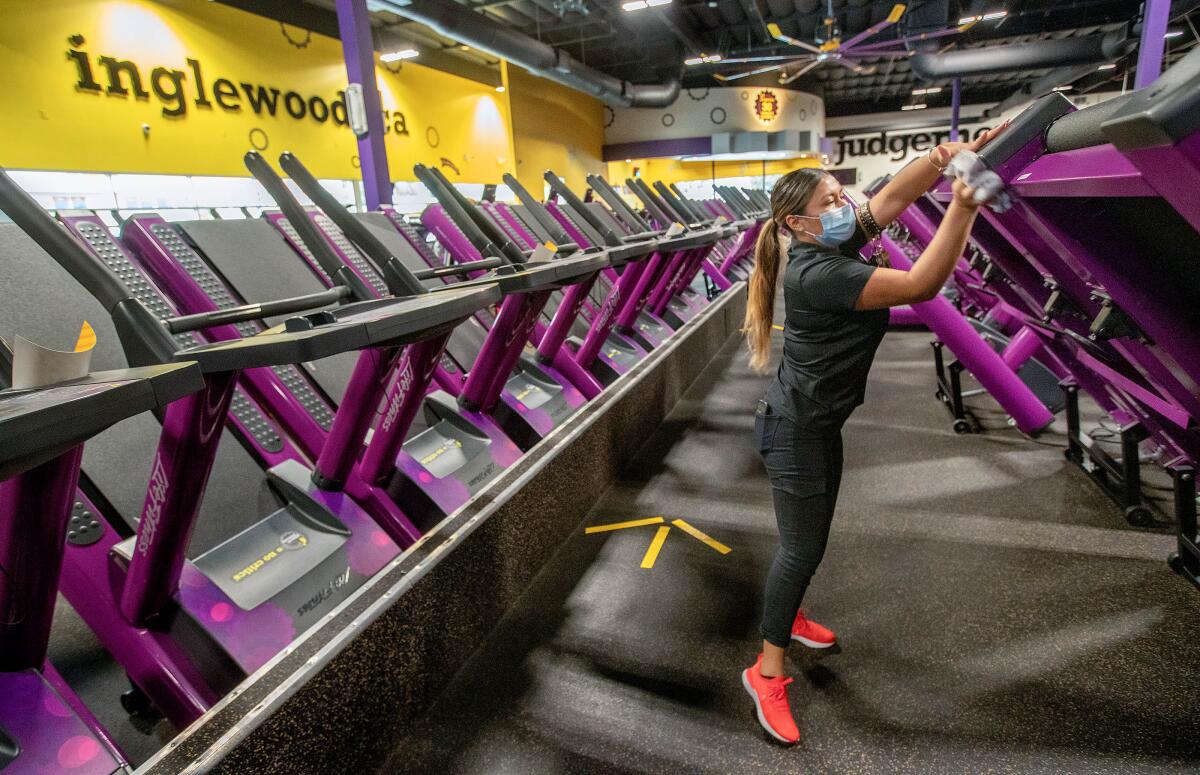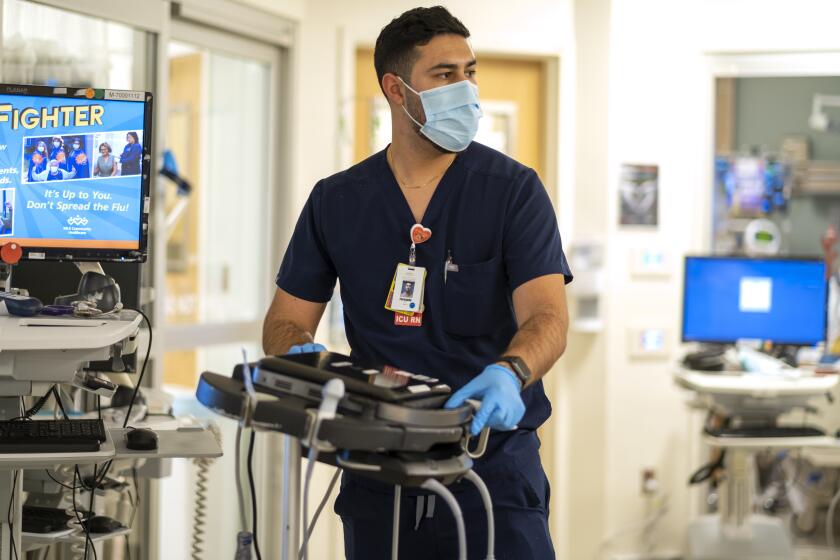How safe are indoor gyms during Omicron surge? What experts say

The rising risk of COVID-19 infection amid the Omicron surge is causing public health officials and experts to advise more caution in indoor gyms, saying it is critical to mask up inside.
Several San Francisco Bay Area counties recently ordered mask mandates in indoor gyms, even if everyone inside is fully vaccinated. These counties — San Francisco, Alameda, Contra Costa, Sonoma and Marin — ended a limited exception to their local indoor mask rules that allowed gym members to not wear masks if the facility verified all guests were vaccinated.
Los Angeles County, with a vaccination rate less than that of many Bay Area counties, has long had a stricter indoor mask rule and has required indoor masking inside gyms since the summer, as the Delta surge was picking up momentum. But not everyone adheres to the mask mandate, and compliance can be spotty.
It’s safest to work out outdoors. Some infectious-disease experts say that, in light of soaring coronavirus case rates, if you’re working out indoors, it’s safer if everyone is vaccinated and masked.
But gyms around the state can have their own policies requiring vaccination. And only a handful of cities in California — among them, Los Angeles, West Hollywood, San Francisco and Berkeley — require people working out in an indoor gym to be vaccinated.
Even with vaccination and masking requirements, different parts of gyms have varying degrees of risk. The least risky area is likely the weight room, given that users can spread out and stay distant from other people. The most risky area would be indoor classes, where people are close to one another and are heavily breathing out respiratory particles, according to UC San Francisco infectious-disease expert Dr. Peter Chin-Hong. An area with moderate risk — somewhere between that of the weight room and indoor gym classes — would be around the treadmills.
Chin-Hong said he’s more comfortable with indoor gym classes where everyone is vaccinated and masked, and is not comfortable in scenarios where attendees are either unmasked or potentially not vaccinated.
Every infected person in L.A. County is on average transmitting the virus to two other people, according to estimates from California’s COVID-19 computer models.
Even if everyone is masked most of the time but there’s no vaccine verification requirement, the Omicron surge gives Chin-Hong pause about indoor gym classes because the variant can result in a large number of asymptomatic but potentially contagious people.
“I’m just a little bit more uncertain about it with Omicron because there’s so much more virus particles and it can linger there for probably a little bit longer,” Chin-Hong said.
An indoor spin class in the current surge is particularly risky, especially if people there are unvaccinated. “Everyone’s close together ... and it’s a class situation, where you can’t really socially distance,” Chin-Hong said. People might be wearing less effective masks, like cloth ones, or loose masks that aren’t tightly fitting, that would allow the particles from their lungs to spill out into the air quickly.
Early data suggest that the coronavirus can hang around in an indoor setting for an hour or two, staying even after a contagious person has left the area.
Chin-Hong said he’d rather wait for the current surge to be over before returning to indoor gym classes.
There have been many documented transmissions of the coronavirus in gyms while people were doing aerobic activity, Chin-Hong said. It’s an “easy and efficient way to mobilize the virus.”
Another way to reduce risk in gyms would be to go during less crowded times.
UCLA medical epidemiologist and infectious-disease expert Dr. Robert Kim-Farley agreed that people who are vaccinated, boosted and masked can feel more comfortable going into indoor gyms where proof of vaccination is required and people are complying with mask rules.
Kim-Farley also recommended spacing people out at the gym, and ensuring that good ventilation systems can reduce the risk of transmission.
More to Read
Sign up for Essential California
The most important California stories and recommendations in your inbox every morning.
You may occasionally receive promotional content from the Los Angeles Times.














